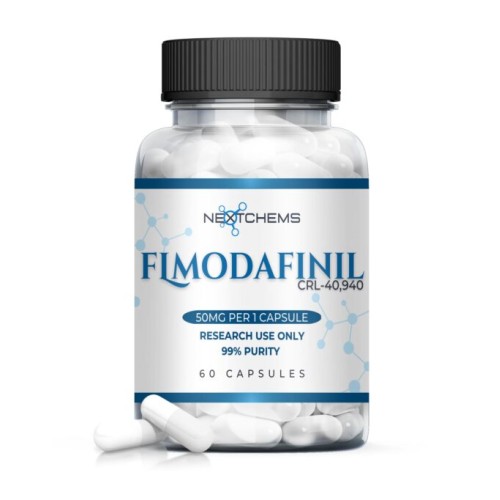Overview
- Flmodafinil:
- Also known as bisfluoromodafinil and lauflumide.
- Related to modafinil, developed for various medical conditions.
- Uses: Chronic fatigue syndrome, idiopathic hypersomnia, narcolepsy, ADHD, and Alzheimer's disease.
- Non-medical use: Sold online as a nootropic (cognitive enhancer).
Pharmacology
Pharmacodynamics
- Action: Selective atypical dopamine reuptake inhibitor (DRI).
- Inhibits dopamine transporter (DAT) effectively (Ki = 4,090 nM).
- Lower affinity for serotonin transporter (SERT) and negligible for σ1 receptor.
- Effects:
- Increases dopamine in nucleus accumbens (150-200% of baseline).
- Greater wakefulness promotion compared to modafinil with less sleep architecture disruption.
- Does not induce cytochrome P450 enzymes (e.g., CYP3A4/5).
Comparison to Modafinil:
- Advantages:
- Longer-lasting wake-promoting effects.
- Minimal sleep rebound and reduced slow-wave EEG disruption.
- Mechanism:
- Blocks DAT by 83% (higher than methylphenidate) with no adrenergic side effects.
Chemistry
- Structure: Racemic mixture of (S)-(+)- and (R)-(–)-enantiomers.
- Enantiomers named JBG1-048 (S) and JBG1-049 (R).
- Related analogues: Modafinil, armodafinil, fladrafinil, and others.
History
- Patented in the 1980s; further developed in 2013.
- Preclinical research started in 2015.
- Current focus: Chronic fatigue syndrome.
- Discontinued for narcolepsy, ADHD, and Alzheimer's.
Research
- Ongoing studies on its pharmacokinetics and wake-promoting mechanisms.
- Early data suggests high efficacy and minimal side effects in animals.
Key Notes
- Advantages over modafinil:
- Does not induce liver enzymes.
- Longer wakefulness effects with less sleep disruption.
- Current Status: In preclinical development for chronic fatigue syndrome.

